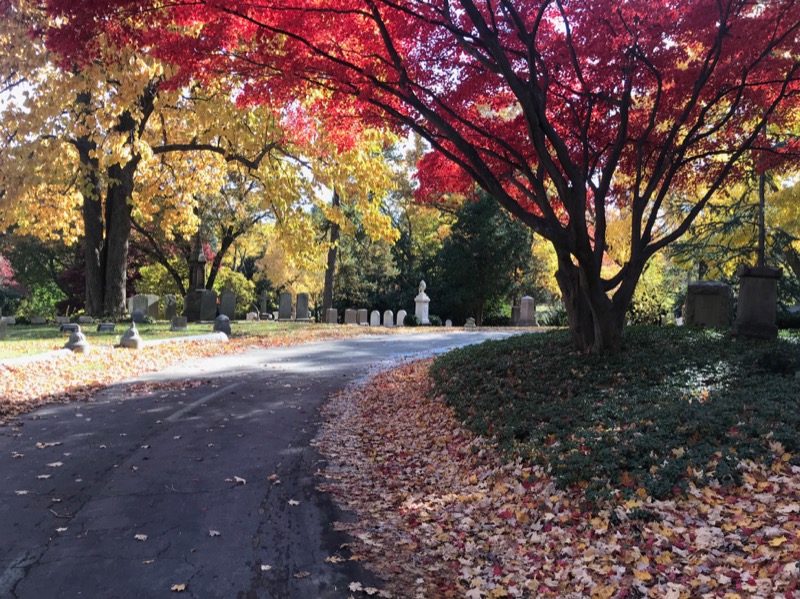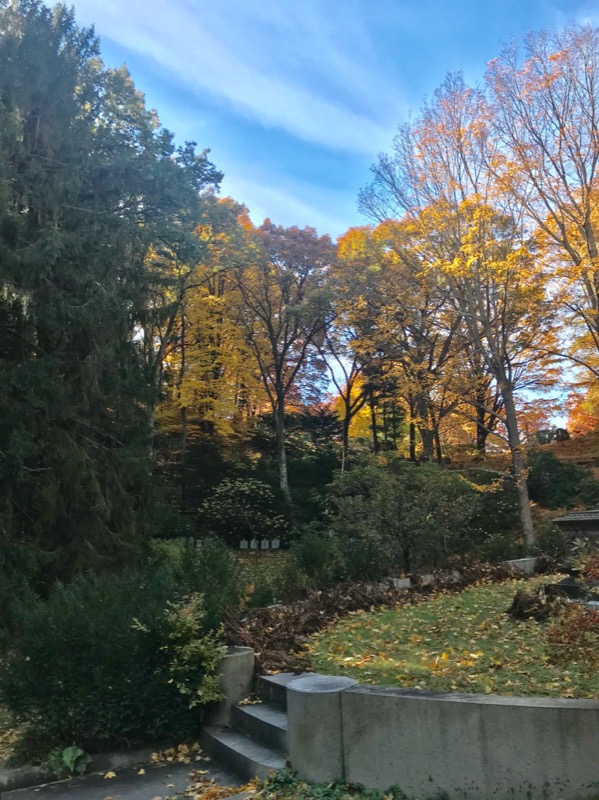posted January 8 2023
every zelda is the darkest zelda
Jacob Geller’s lovely video essay on the darkness of the Zelda franchise. He starts with the obvious entries (Twilight Princess, Majora’s Mask) and ends up somewhere I didn’t expect.
posted June 26 2022
It is the arrogance of every age to believe that yesterday was calm.
Tom Peters, Wired 5.12, Dec 1997
posted February 7 2022
The solution of any problem is good only for that problem, but the method of working out the solution may have a lot to teach us.
Walter Dorwin Teague
posted December 27 2021
Remembering Professor David I. Mostofsky
“We know that the brain’s primary sensorimotor cortex is laid out in a way that closely mirrors the overall shape of the body. You all probably remember the distorted ‘sensorimotor homunculus’ drawings from your introductory textbooks. But does anyone know how scientists got their first hints about this?” Professor Barbas loves tossing out these kinds of questions, which are fascinating to a renowned researcher with a vast knowledge of human neurology, but nearly impossible for first-year graduate students.
I tentatively raise my hand. “A Jacksonian march?” A Jacksonian march, also called a Jacksonian seizure, follows a characteristic pattern. It usually starts as a tremor or twitch in the fingers, which then proceeds up the hand, then the forearm, then the upper arm, and so on. It does this because the seizure activity is spreading in the same way along the neurons of the sensorimotor cortex. One of the earliest hints of the hidden structure of the brain.
“Yes, exactly!” Professor Barbas is genuinely excited that a student has finally gotten one of these right, and I am genuinely excited to be that student. But I didn’t learn about Jacksonian seizures from any of the many papers that I read for Professor Barbas’s class. I learned about them years earlier, in an undergraduate class taught by Professor David Mostofsky.
This fact exists in my memory almost entirely without context. I don’t remember why Mostofsky went off on a tangent about Jacksonian seizures, but I can still see him up in front of the class in his rumpled suit demonstrating what the seizure looks like. The image stuck with me. Just one of those little moments.
When I heard that Mostofsky died in late 2020, I realized that he had given me many such moments.
I first met Mostofsky when I enrolled in Behavioral Medicine, a course that covered a wide variety of fascinating topics. The power of the placebo effect, cultural differences in the reporting of disorders like epilepsy, the difficulties of getting patients to comply with life-saving treatments, on and on. My transcript informs me that I took this class in my final semester of college and earned an A. I still think about the class almost seventeen years later.
About a year after taking Behavioral Medicine, I was thinking of applying to grad school. It was around this time that I bumped into Mostofsky on the Green Line. I decided to email him to ask if he’d be willing to write me a letter of reference for my applications, and also for any advice he might be willing to give me about the whole grad school thing. Neither of my parents are academics, or even college graduates, so I was very much flying blind. He replied that it’d be easier to talk in person, could I come in next Sunday?
The Psychology Department building is locked on weekends. As I approached the building on a rainy Sunday morning in early Spring, there was Mostofsky, an umbrella in one hand, his other hand holding open the door.
His small office contained a decade-old computer, a University organizational chart dated 1990, a rather nice Galton board, and one of the most profound messes of papers I have ever seen. Every available surface was piled high with them. Mostofsky moved a small stack, revealing a chair, which I then sat in. Yes, he’d be happy to write me a letter of reference. No, I shouldn’t mention in my application that I’m undecided between experimental and clinical work. Admissions for clinical programs are much tougher than for experimental, so the committee might think I’m trying to get into the easier program and then transfer into the harder one. Think hard about it and pick one, he said.1
We talked for maybe half an hour, and after a pleasant goodbye, I was on my way. He made good on his promise to write me letters of reference, and to my enduring surprise, I ended up returning to Boston University for doctoral work in experimental psychology. My lab was just down the hall from his office.2 “Jonathan, you made it! That’s wonderful!” he said upon seeing me that Fall.
My second year of grad school required working as a teaching assistant. I signed up to assist Mostofsky’s Fall course, Experimental Design in Psychology. It fulfilled the statistical component of the undergraduate degree requirements—one of those courses that no one wants to take and even fewer want to teach. But Mostofsky genuinely loved teaching statistics. “Statistics is beautiful!” he once told me, emphatically. This was a man who amused himself in departmental meetings by doodling the experiment-wise error inflation curve.
A few weeks before the semester started, I mentioned to another professor that I’d be teaching with Mostofsky. “Oh he’s great. Remarkable, really. Did you know he’s a rabbi?” This professor was a noted eccentric and I thought to myself, Sure, a rabbi. She probably thinks all Jews are rabbis. How could a person possibly have time to be a practicing rabbi, researcher, and lecturer?
A few minutes before the first lecture of the semester, I said to him, “Someone told me that you were a rabbi, can you believe that?” He looked at me, winked, and said, “I don’t like to advertise.” It turns out that in addition—and parallel to—his academic career, he was indeed an ordained rabbi, currently practicing at a synagogue in nearby Brookline. To say that this put him in a unique position is something of an understatement. He had personal correspondences from the eminent behaviorist B.F. Skinner lamenting that such a talented scientist would devote so much time and energy to “superstitions”. I thought back to when Mostofsky had made time to give me advice about grad school, on a rainy Sunday. Saturdays would have been out of the question for a rabbi, of course.
Grad school rolled on. In my last year, Mostofsky suffered a mild heart attack. He was back teaching the next week. “What can I say? I’m mortal,” he said with a shrug. Shouldn’t he take a little more time off to recuperate? “Eh. They’ve got me on precautions, I’ll take it easy for a while. It’ll be fine.” And so it was.
As my graduate education came to a close, I found myself questioning whether I really wanted to stay in academia. I applied for industry jobs that could leverage the skills I’d developed on the road to a doctorate. And then one day Mostofsky said, “Aren’t you finishing soon? If you’re looking for a postdoc, a colleague of mine, Bruce Mehler—actually he used to be a graduate student in this department until he left for the private sector—he’s now at a lab at MIT that’s looking for postdocs. The Aging Lab, or something like that. They do very interesting work. Want me to put you in touch?” Fine, I’ll apply to this one postdoc, I thought.
I’d go on to spend an excellent five years at the MIT AgeLab as a postdoc and then research scientist, keeping in touch with Mostofsky throughout. I’d often email him links that I thought he’d find interesting, or ask him for a bit of statistical advice. After one such email, Bruce took me aside and said that old age had finally caught up to Mostofsky. He had suffered a sudden and severe cognitive decline, and it would probably be best not to email him anything that might confuse him. He passed away a couple of years later. What can I say? I’m mortal.
Mostofsky wasn’t a world famous scientist. But he was diligent and meticulous in his work, respected in his field, and passionate about his subjects. He was brilliant, but not flashy. He was deeply invested in the education of young minds and was a skilled, considerate mentor. He guided and encouraged me for more than a decade, and he did it so effortlessly that I’ve only really noticed with the clarity of hindsight. His influence on my own life has been nothing short of profound, it turns out. I am sure many others would say the same.
I write all this knowing that my own perspective captures but a small sliver of the actual man, the Rabbi Professor David I. Mostofsky. Yet I feel it’s important to enter it into the record, to let the world know that here was a righteous man who, in his own quiet way, did good works. He was many things to many people, as people always are. But to me, he will always be the kindly professor in the rumpled suit, holding open a locked door for an eager kid on a rainy Sunday morning.
A mensch worth remembering. Gone, but not forgotten.
-
While clinical psychology programs are among the most selective (especially a renowned one like Boston University’s), almost all doctoral programs are hard to get into, accepting perhaps a handful of new students each year out of several hundred applicants. I was one of three students selected for admission in my program that year. It’s funny, in retrospect, to think of one program as being harder to get into than another. ↩
-
In the sense that most of the department was housed in one absurdly long hallway. ↩
posted September 22 2019
shutter bugged
The latest iPhone is all about the camera. The lenses are a marvel, and the future of photography is machine learning. With the iPhone 11, there are now several orders of magnitude more computational power behind your vacation snaps of Disney than there were in the systems that put man on the moon.
And it is all useless to me.
It’s the UI, of course. They made a small change to the camera’s behavior. The Camera app gives you two ways to take a picture: press the software shutter button, or press the hardware Volume Up key on the side of the phone. Before the iPhone 11, holding down either of these buttons would put the camera in Burst Mode, allowing it to capture a rapid succession of still images. As of the iPhone 11, holding down these buttons causes the camera to transition to video capture mode.
Which means I will never be able to take a good picture on an iPhone 11.
I have mild cerebral palsy, and with it, mild intentional tremor. My hands are fine at rest, but will often shake when I’m doing things with them—putting the key in my front door, carefully aligning a ruler, and my favorite, carrying a brimming cup of scalding coffee to my desk. The tremor isn’t bad and usually isn’t a big deal, though I suppose it depends on how full the coffee cup is.
My tremor is most annoying, believe it or not, when I pull out my phone to take a picture. Taking a picture requires not just holding the camera steady, but holding it steady while actively pressing a button. This inevitably causes my hand to shake slightly, which inevitably produces a blurred photo. Burst Mode was the answer to my prayers. It allowed me to press the shutter button, get my little shake over with, and capture some nice crisp photos from mid-burst.
Not so with the iPhone 11, which interprets the held shutter button as a command to begin shooting video. There is a fallback gesture that initiates Burst Mode on these phones, but it’s unintuitive, hard to discover, and most importantly, does not seem very tremor-friendly. So despite the fact that I am still using an iPhone 8, and these new cameras seem very tempting, I can’t possibly upgrade to an iPhone 11. It doesn’t matter how advanced the computational photography is if I can’t hold the thing steady.
Then again, my tremor is mild, and I can occasionally summon a Zen-like calm that makes this a nonissue. By the time I get there, though, the spotted egret that I had wanted to capture mid-flight will have long since died. Really, would it have killed Apple to make this a user-configurable option?
Update July 5, 2020
Per Apple’s preview of iOS 14, this behavior has been fixed! From the docs:
A new option allows you to capture burst photos by pressing the Volume Up button, and QuickTake video can be captured on supported devices using the Volume Down button.
I’m thinking my four year-old iPhone 7 is due for an upgrade. The new cameras are really something.
posted November 4 2018
Autumn at Mount Auburn Cemetery
If I have a Happy Place™, it takes the form of a forest at the height of autumn. I like to think of autumn as the time of year when all the trees stop pretending and show us who they really are. Last week I had the pleasure of overdosing on autumnal splendor with my friend, Paul. Together we went on a long walk through Cambridge’s Mount Auburn Cemetery. Dedicated in 1831, Mount Auburn was the United States’s first “garden cemetery”—meant to be a place of beauty and contemplation as much as it was (and still is) a burial site.
We couldn’t have asked for a more beautiful autumn day at the height of foliage season, and it resulted in some pretty amazing photos. Facebook’s compression algorithms hit the tiny details in these particular photos really hard. So I took it upon myself to build a little gallery on my own humble site. Click any of the thumbnails for a bigger view, or hit the download button for the even larger originals.


































